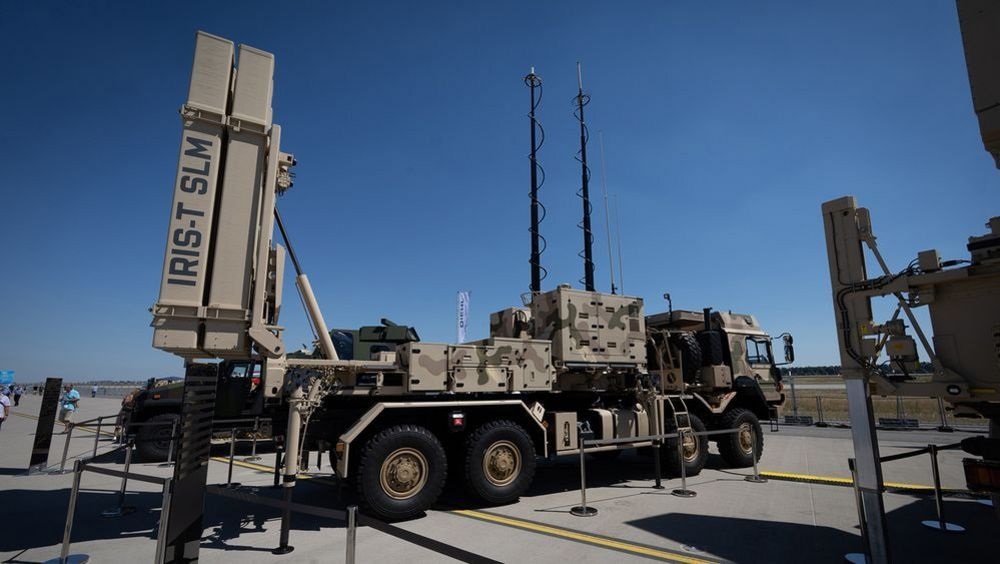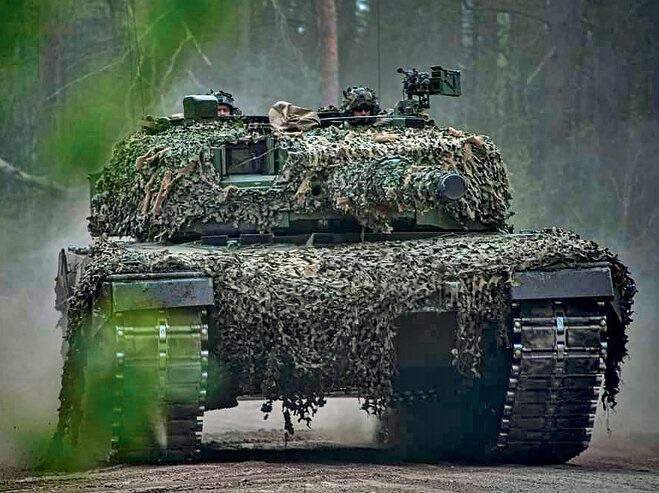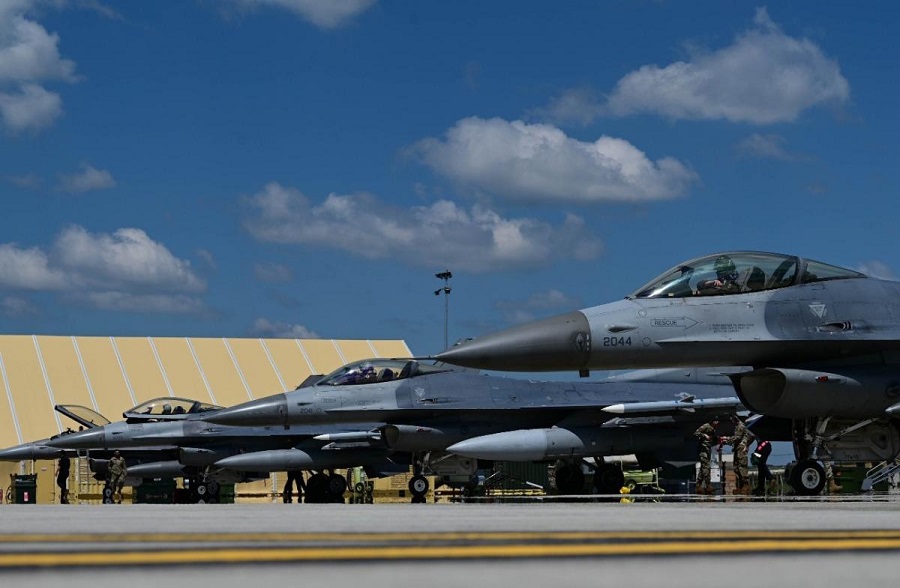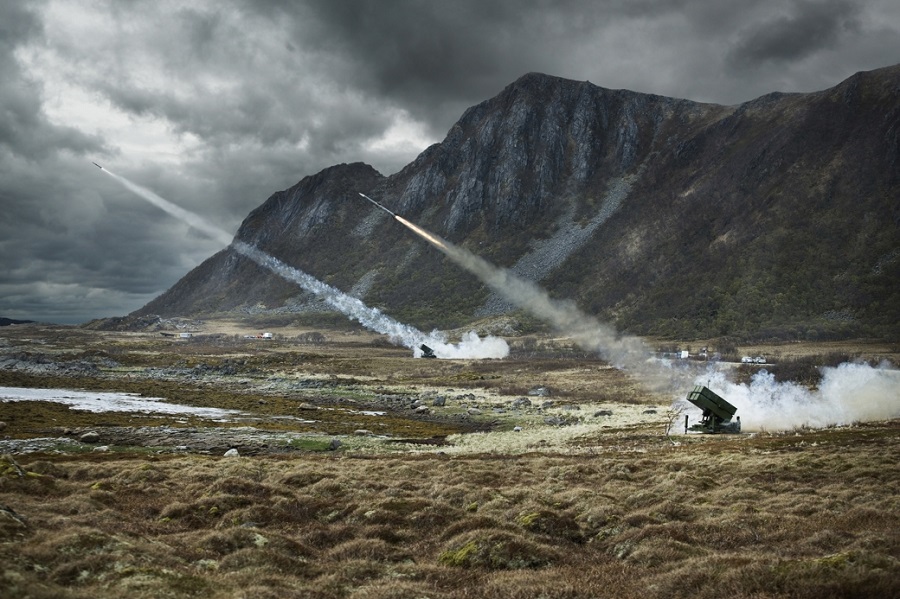In January 2023, the United Kingdom was the first country to declare assistance in training Ukrainian pilots to fly Western multi-role aircraft, followed in April by the U.S. administration agreement on the transfer of F-16 jets from Europe to Ukraine. In summer, Denmark and the Netherlands were first to declare they would supply the planes, and then during the last NATO summit, 11 countries officially announced the “F-16 Coalition for Ukraine”. In October, training for a group of Ukrainian pilots on the F-16 officially began in the U.S.
Ukraine’s capability gap
Since the beginning of Russian aggression, one of the biggest gaps in Ukraine’s military capabilities has been in multi-role aircraft. Before the war, Ukraine had 75 such jets—post-Soviet models—at its disposal. So far, Ukraine has lost half of its MiG-29 light fighters and Su-27 heavy fighters, as well as Su-24 tactical bombers and Su-25 close support aircraft. At the same time, Russia has also suffered high confirmed losses of at least 85 jets (mainly Su-25 and Su-34). However, Russia has an advantage with 600-650 remaining multi-role aircraft, which may pose a serious threat to Ukraine when coordinated with missile and drone strikes. Ukraine’s fighter aircraft still make a significant contribution to its overall defence against these type of threats, however, the lack of aircraft, their intensive use, and armament types of all remaining Ukrainian jets do not allow them to be used more widely in missions supporting its land counter-offensive or counter-attacks.
Evolution of the assistance to Ukraine
Initially, the losses in Ukraine’s Air Force were partially compensated by supplies of spare parts and armaments from Central Europe. At that time, the U.S. administration was reluctant to support Poland’s initiative to deliver MiG-29s to Ukraine, considering it to be a risky step in light of Russia’s threats to NATO. Instead, deliveries of air-to-air missiles for MiG-29s and Su-27s as well as engines and parts for the MiGs were undertaken. A year later, in spring of 2023, Poland and Slovakia transferred most of their MiG-29s to Ukraine. Currently, apart from Bulgaria and a few non-European states, there are no sources of additional MiG-29s or Su-25s, and there are no realistic options for supplying parts for Ukraine’s two other types of Sukhoi jets. Another important step was the adaptation of some Ukrainian jets to carry Western weapon systems. This made it possible to use American HARM anti-radar missiles, and British-French Storm Shadow/SCALP cruise missiles. Both armament types have contributed to weakening Russia’s air defences and logistics in occupied Crimea.
Since the start of the wider war, it has been clear that Ukraine’s aviation requires a full rearmament to include multi-role jets of NATO standards. Its pre-war plans assumed implementation of this process by 2032 with the purchase of 78-102 brand new aircraft. Experts expected Ukraine to also purchase the Gripen-NG from Sweden or the latest versions of the F-16 Blk. 70/72 and F-15EX from the U.S. In war conditions, however, Ukraine started to lobby for cheaper and older versions of the F-16. Although these efforts were supported by Congress then, the U.S. administration still expressed concerns about Russia’s military response to such transfers. In April 2023, President Joe Biden officially agreed to transfer used F-16A/Bs from European NATO countries to Ukraine. This option made available at least 90-100 F-16s from Denmark, the Netherlands, and Norway, as well as a large group of countries that can train Ukrainian pilots and ground crews. The group initiated at the most recent NATO summit included Belgium, Denmark, Luxembourg, the Netherlands, Norway, Poland, Portugal, Romania, Sweden, the UK, and the U.S., with Greece possibly joining them soon. Sweden specified that a decision about transferring Gripens may be considered after Swedish integration and formal membership in NATO.
The efforts of the “F-16 Coalition” might postpone for some time plans to transfer other aircraft to Ukraine. There has been no official confirmation of deliveries of the Swedish Gripen, British Typhoon, American F/A-18, or the French Mirage-2000, although these options were speculated about intensively in 2022. Rather, general declarations or comments from countries with surplus jets—Australia, Finland, France, Canada, and the UK—seems to confirm the clear priority on the F-16. There are also no longer media reports about further negotiations between Ukraine and the U.S. on the transfer of A-10 close-support aircraft, initially offered by the Pentagon in summer 2022. The U.S. has 85 of these planes in reserve and 220 to be withdrawn from military units in the coming years. F-16s could provide air cover for the A-10s which would be able to react quickly to destroy Russian armoured columns, but the Ukrainian side has been concerned that such missions by these well-armed but slow and low-flying planes would be exposed to the still strong air defences of Russian units.
Challenges to the full rearmament of Ukraine
Unless some classified training programme of pilots was launched in 2022, the Ukrainian F-16s are unlikely to enter combat until the spring of 2024 at the earliest. This timing excludes their contribution to combat operations during the coming winter. Moreover, putting these jets into service involves numerous challenges, first of all pilot training. Plans for adapting Ukraine’s airbases and logistics and weapon packages for its F-16s remain classified. If the Israel-Hamas conflict escalates to the level of a Middle East war, the delivery of large quantities of JDAM precision bombs from the U.S. to Ukraine might be problematic. Besides the JDAM, transfers of the advanced and long-range JASSM missile seems an unrealistic option so far.
The “F-16 Coalition” is now focused on training the Ukrainian pilots and ground crews, as even used and modernised versions are still more complex to fly and service than MiGs. The first group of selected Ukrainian pilots underwent courses in technical and tactical English terminology in August, and the first proper training courses for F-16 pilots was launched in September in the Netherlands and Denmark (at Skrydstup Air Base). In October, flying courses on F-16s were started in U.S., at Lackland Air Force Base in Texas. The Pentagon shortened the entire flying training process to a record low 4-5 months. For comparison, before flying in a U.S. combat unit, American pilots train in three stages for 22 months, including the last stage of piloting F-16s for nine months.
In addition to existing issues, Ukraine and its partners should also consider the medium to long-term challenges. Within a decade or two, Ukraine will have no problem with the availability of used F-16s, and with the modernisation of the jet’s users in Europe, the pool might increase to at least 120 planes. The U.S. fleet of F-16C/Ds is even several times larger than the European one, including a pool of 330 in reserve and 550 in service, with plans to replace them in this or the next decade. Potentially the biggest challenge for the rearmament of Ukraine’s aviation may be serious swings in U.S. policy. If an isolationist candidate wins the 2024 presidential election, then U.S. aid to Ukraine would probably be cut off quickly. However, the activities of the “F-16 Coalition” in terms of training and supplies of further aircraft and spare parts would then be continued by the Europeans, even without the participation of the Americans. Naturally, the lack of a U.S. contribution to European security would then be a crucial and much broader problem.
Conclusion
The scale of the threat from Russia demands the rapid rearmament of Ukraine’s Air Force with F-16s. The decisions by its Western partners have for now mainly psychological significance as and visible signs of the determination and support for the defenders. Ukraine and its partners should moderate expectations of the “game-changing” impact of the F-16s on the course and results of the war. These jets will enter combat at the earliest in the spring of 2024, and their effectiveness will be determined by the pilots’ mastery of typical missions, as well as their models and supply of weapons. With F-16s possibly entering combat only next year, during the coming winter, Ukraine’s partners should increase deliveries of interceptors for ground-based air defences.
Depending on the Ukrainians’ first experiences with the F-16s, it may be possible to use them more broadly against ground targets in areas occupied by Russia. Ukraine has overcome earlier concerns by the U.S. and German decision-makers on the use of F-16s against targets within Russia. This might be related to an understanding about the range and types of targets for Ukrainian F-16s, likely contained in a separate, confidential and long-negotiated U.S.-Ukrainian agreement. Moreover, by spring 2024 it would be desirable for Ukraine’s partners to re-examine and make decisions regarding close-support aircraft. Still available options include the American A-10s, Bulgarian Su-25s, and Polish Su-22s, or as an alternative, MQ-1A Predators (drone) from the U.S. reserve—all four systems are relatively easy and quick for the pilots or operators to learn, as well as non-demanding and relatively cheap to operate and service.
Deliveries of F-16s to Ukraine will help it reconstitute the basic capabilities of its military aviation and strengthen its deterrence effect after the war. The process of Ukraine’s transition to the F-16 also will be important for interoperability and integration with NATO. Despite uncertainty about the next U.S. administration and policy towards Ukraine, Europe has the resources to provide additional F-16s, spare parts, service, and pilot training. Much of Poland’s experience with its air force’s transition from MiGs to F-16s may prove helpful for Ukraine. In the context of the ongoing modernisation of most of the European NATO air forces, this assistance to Ukraine will not create a capability gap in the Alliance, and in the next few years these will be strengthened relative to Russia’s forces. Moreover, the Western sanctions and war losses may significantly limit further the technical modernisation of Russia’s military aviation, especially mass production of the advanced Su-57 jets.
Source: The Polish Institute of Foreign Affairs (PISM).























![NATO to consider increasing, stabilising support for Ukraine [BRIEF]](https://defence-industry.eu/wp-content/uploads/2023/12/Diehl-Defence-EUR-600-million-order-for-IRIS-T-SLM-air-defence-system.jpg)



